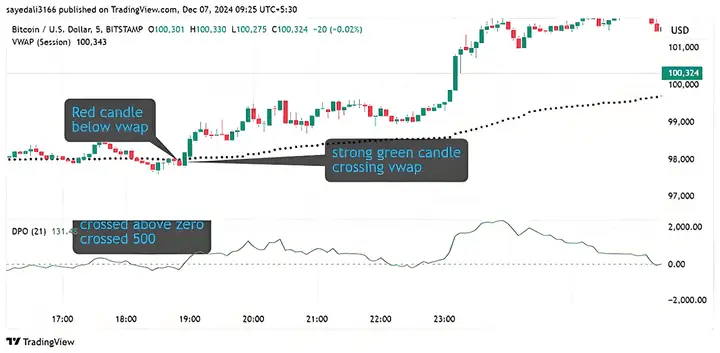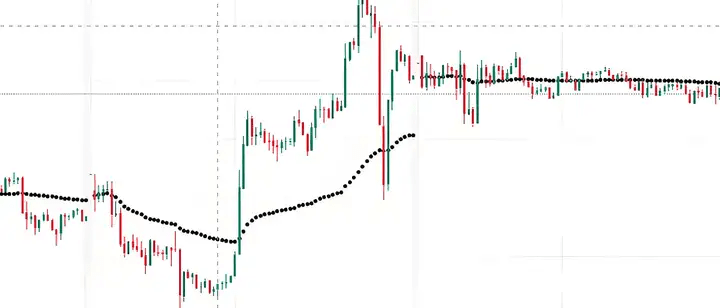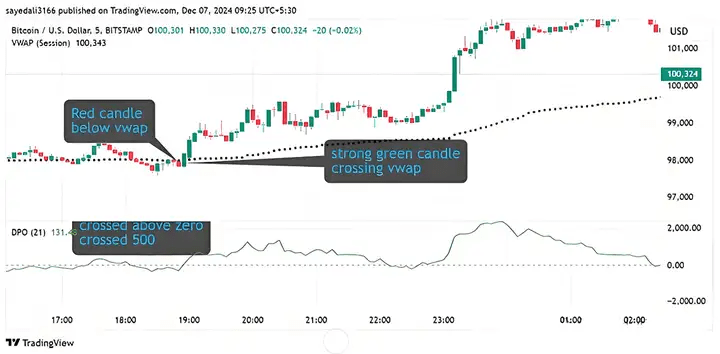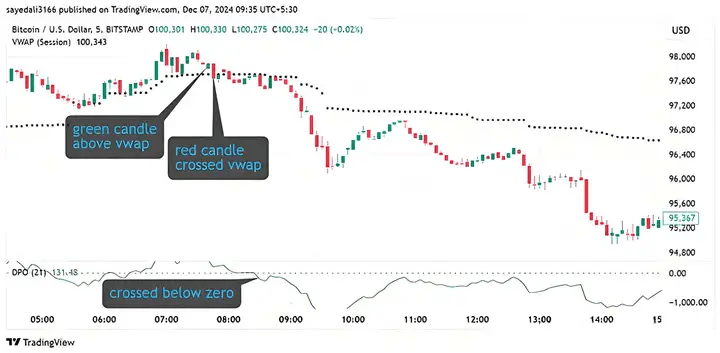Once you crack the trading code, life feels like enlightenment! Ten years ago, when I first entered the crypto space*, like most retail investors, my profits and losses seemed entirely based on luck, with no discernible patterns. However, after spending a few years in the crypto space, continuously learning and absorbing knowledge, with mentors and senior colleagues sharing and guiding me, I slowly cracked the code and formed my own investment system!
After much thought, I decided to share my short-term trading strategy that grew my investments from $50,000 to $23 million in just three years! I wouldn’t say I’ve become rich, but I’ve achieved a certain degree of financial freedom, just enough to cover my expenses. Throughout this process, I deeply understand how important a good mentor is! Those who have been through the rain often want to provide shelter for others. Having experienced isolation, I can empathize with others' losses. I want to extend a helping hand to make up for the regret of wanting help back then, as if I am providing an umbrella for my past self caught in the rain. This is the original intention of my sharing; I hope to help many friends in the crypto space avoid some detours!
If you manage it with care, it will continue to grow and generate compound interest. In the crypto space*, you also need to be careful not to lose it; I will mention this point at the end. The following 10 pieces of advice are entirely based on my personal experience. Absolutely true, without any exaggeration.
1. Invest in hard assets as early as possible.
When I first bought gold, the price was around $1,600. Now that price has more than doubled. When I first bought Bitcoin, the price was about $700, and now it has surpassed $100,000. These are hard assets: they cannot be diluted or printed out of thin air. They have scarcity, high market demand, and are difficult to replicate.
Working or receiving a salary can never create wealth like investing in hard assets. Gold and Bitcoin are both considered hard assets. Regardless, start dollar-cost averaging into hard assets with your spare cash.
This also includes buying index funds like S&P 500+ or real estate in always in-demand locations. Then let time do its work; five, ten, twenty years later, you will be pleasantly surprised!
If you never invest in hard assets, it is almost impossible to become rich and accumulate wealth. When viewed from a long-term perspective of decades, even investing $1,000 today will lead to significant changes. Don’t procrastinate; make a plan and act on it as soon as possible.
2. Engage in things with growth potential.
This applies to any field; I have discussed similar viewpoints before. Examine your current skills and passions, and imagine that 100,000 people could see the content you produce. Even if only 1% recognize your value, that means you have 1,000 potential clients, fans, subscribers, or supporters.
Be bold in trying. If you don’t take the first step actively, you will never know the outcome, and it often brings surprises. Very few dare to do so, but those who dare to try will always receive some rewards. Although it takes time to settle, one day you will break through.
When I started, I had zero fans and no community foundation. So I began to work hard. By consistently outputting daily and giving my all, people will naturally see your brilliance. Once you make your first dollar online or gain any income through entrepreneurship, the door to success will open wide.
Starting is the hardest point, yet very few put it into practice.
3. You can never be richer than your true self.
Your wealth level today reflects your current level of personal development.
Therefore, if an ordinary person suddenly wins a lottery of $1 million, they will almost certainly squander it within a year. The reason is that their personal qualities fall far short of the capabilities required to manage that money.
Stop expecting others to take action for you. If you do not invest in yourself, no one will invest in you. Knowledge is very accessible now; as long as you can access the internet, any field can be explored. With artificial intelligence, you can even have a personal mentor guiding you at any time, provided you are willing to spend time. No excuses needed.
Hone your skills through practice (see point two). Even with limited abilities now, continuous practice will lead to improvement. Take action, time will witness the transformation; this principle sounds like investing in Bitcoin.
4. Appropriately overestimate yourself.
Maintaining a positive feedback loop is crucial. When you assess your self-worth slightly higher than your current skill level, you will continuously pursue progress.
Even if you achieve nothing today, firmly believe that you deserve more and will eventually succeed. Changing this mindset could have a significant impact on your future self.
What you do today shapes who you will be tomorrow.
5. Money is not omnipotent.
Gold or Bitcoin can be purchased. However, you cannot go to Amazon to buy a home or find a place that can be called 'home.' These forms of wealth cannot be measured in money and cannot be sold anywhere.
On the road to pursuing material wealth, do not forget the things that truly matter.
Not establishing a family or cultivating meaningful relationships may come at a high cost in the future; depression, midlife crises, or identity crises may follow, which is as important as holding Bitcoin.
Material wealth is often meaningless if no one shares it. Ultimately, what humans cherish are various experiences, and more wealth allows for more experiences. However, some of the deepest experiences are almost free.
6. Face challenges head-on.
If you are afraid to buy Bitcoin, it might be a good sign that you should be buying it. Fear often hinders you from trying new things. However, if you want to enhance personal development (see point three), engaging with new things is essential.
These experiences can be painful, pleasant, or mundane. If you stop labeling them and view them merely as new experiences for personal growth, you can quickly move on to the next stage.
As you experience this cycle repeatedly, success and failure will encounter each other. The difference lies in: if you invest surplus energy in hard assets, each time you fall, you rise higher, and the ascent is faster. Success will come faster, and the rewards will be richer.
7. Learn to reset yourself.
People live in this place for decades without leaving, and the environment has never changed. While this situation is okay, you must be careful not to let your environment limit your personal growth.
If you possess the mindset described in point four (i.e., placing more value on self-worth), you will be keenly aware of this. As you continue to grow personally (see point three), the things that bind you will naturally reveal themselves. At this point, you must make a choice, and this decision may trigger the psychological reaction described in point six (fear).
Breakthrough limits or give up and turn back? This may be your breakthrough to wealth.
8. Never fall into traps that reduce wealth.
A typical representative of cryptocurrency is altcoins*. The entire crypto space has only one hard asset, yet it is filled with thousands of traps. Each time you spend money on altcoins, the opportunity cost is not being able to buy Bitcoin.
This simple decision will cost you a huge price for your wealth in 5 to 10 years. The same principle applies to your choice to buy a car instead of investing that money; every consumption comes at the cost of opportunity to invest.
View consumption and investment rationally, and be wary of lifestyle inflation. If you haven't used your income for investment, correct this issue immediately.
Once you have some wealth, reveal less, don’t show off, and avoid posting on social media. Doing so may attract unscrupulous individuals, including relatives and friends who are ready to sell you 'investment' projects.
9. Never sell your hard assets.
A major taboo in cryptocurrency investment is converting Bitcoin into altcoins. Anyone who does this will ultimately pay a heavy price after waiting long enough. Although altcoins can occasionally outperform Bitcoin in a six-month to one-year cycle, if you look further out over a few years, this has never happened.
The second issue with selling hard assets is that there are no better purchase options. If you sell Bitcoin to buy gold, you still hold hard assets, just with different risk-reward characteristics.
No matter what you do, ensure you are not exchanging hard assets for inferior ones. If you do decide to do so, be sure to calculate the risks and keep them to a minimum, ideally no more than 5% of your total wealth. The potential returns from taking such risks must be asymmetrical and should allow you to buy more Bitcoin later.
If you want to accumulate wealth and keep it, you must hold onto hard assets tightly and never sell them.
10. If you achieve success, be prepared for being targeted by others.
All success attracts wrongdoers; this is true in the crypto space and in any other field. Last year, after downloading malicious software, I suffered a hacking attack, losing $50,000, and my assets in the hot wallet were instantly cleared; I fell for such a simple scam.
I should have thought of this earlier, but before the RATEscape incident, I had never stored large assets in a hot wallet. Once the price of the coins soared, hackers would come. This is why, as long as you have any public exposure, you will inevitably become a target.
If you are losing now and want to make trading your second career in the future, please read this carefully; you will definitely gain insights.
In this article, I will explain a simple and practical trading strategy that combines two indicators. My article mainly focuses on trading strategies and uses technical indicators for trading. Many people also use other strategies related to price action.
Volume Weighted Average Price (VWAP) and the Detrended Price Oscillator (DPO) are powerful tools in themselves. Combining them can create a strategy that utilizes trend following and focuses on mean reversion.
This strategy uses the Volume Weighted Average Price (VWAP) for intraday trend guidance and utilizes the Detrended Price Oscillator (DPO) to identify price deviations and reversals.

Before entering the strategy, let's first understand the indicators.
VWAP (Volume Weighted Average Price)

Helps determine the average price of a security based on quantity and price.
Helps identify intraday support and resistance levels.
Act as a trend-following tool.
DPO (Detrended Price Oscillator)

Eliminate long-term trends and focus on short-term price cycles.
Identify overbought or oversold conditions.
01 How to add indicators in TradingView.
1. Visit TradingView.
2. Open the chart.
Navigate to the chart of the stock, forex pair, or cryptocurrency you want to analyze.
3. Add Volume Weighted Average Price.
Click the indicators button at the top of the chart.
In the search bar, type VWAP.
Select the default VWAP indicator provided by TradingView.
Once added, the VWAP will appear as a line overlaying your price chart.

4. Customize VWAP (optional).
To change the color, line style, or visibility, hover over the VWAP line and click the gear icon.
Modify the settings as needed and click 'OK'.
I changed the line to a black circle.
5. Add DPO.
Click the indicators button again.
Search for Detrended Price Oscillator or DPO in the search bar.
Select the default DPO indicator provided by TradingView.

The DPO will appear in a separate window below the price chart.
02 Long conditions.

1. A strong bullish green candle should cross the VWAP.
2. There should be a red candle before a bullish candle, and the red candle should be below the VWAP.
3. The DPO moves from the negative region to the positive region and breaks through the zero line.
4. Confirm through bullish candlestick patterns or increased volume during breakouts.
03 Short conditions.

1. A strong red bearish candle must close below the VWAP.
2. There should be a green candle above the VWAP line before a bearish red candle.
3. The Detrended Price Oscillator (DPO) should move from the positive region to the negative region and cross the zero line.
4. For stronger momentum, the DPO should also break below -500.
5. Look for increased volume during the breakout as additional confirmation of the trend.
6. Alternatively, confirm entry points with bearish candlestick patterns (such as bearish engulfing or evening star).
04 Take profit/stop loss.
Exit strategies are as important as entry conditions.
It is crucial to establish clear rules to lock in profits and minimize losses.
1. Long exit: If the price falls below the VWAP, it indicates the trend may reverse, or if the DPO peaks and begins to move back toward the zero line, it indicates a weakening bullish momentum, then exit the trade.
2. Short exit: For short trades, exit when the price rises above the VWAP, or when the DPO falls back to zero after dipping into the negative region, indicating that selling pressure may have ended.
05 Final thoughts.
Combining Volume Weighted Average Price (VWAP) and Detrended Price Oscillator (DPO) is an effective strategy that helps traders align with market trends while capturing price deviations to gain opportunities for mean reversion.
By following clear entry and exit rules, using volume as confirmation, and implementing robust risk management measures, traders can improve their decision-making and enhance overall trading performance.
The above are summaries of my practical experiences and techniques in trading over more than ten years, which may not apply to everyone. Each person needs to combine their own practice with these summaries. As a trader, the most terrifying issue is not that you have technical problems, but that your awareness is insufficient, falling into these trading traps without realizing it! There is no invincible trading system, only those who use trading systems invincibly! This is the truth; trading systems ultimately must return to the individual!
